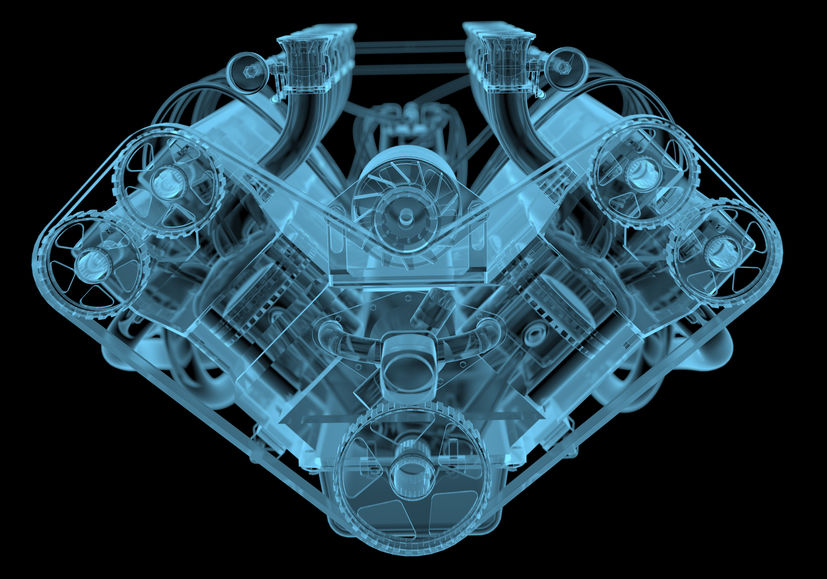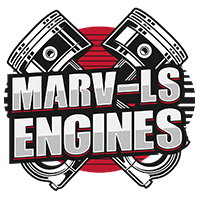
The Luxury Sport (LS) engine has been the cornerstone of Chevrolet’s engine design for their road-based performance vehicles for almost forty years. Chevrolet first introduced the LS1 engine in 1997, as part of their overhaul of the Chevrolet Corvette. The LS1 made it into the C5 and C6 engines. Ever since 1997, the popularity of the LS engine has exploded due to its weight, size, and cost-effectiveness. More on that later.
The Early Days
In the early days, LS engines were the hottest thing on the performance car market. The LS1 was capable of producing 345 horsepower – practically unheard of for something so small and lightweight – weighing only 460 pounds. The LS1 was revolutionary in the Chevy world because it used aluminum parts, as opposed to the older way of doing things – which was to use iron – this decreased its weight by 110 pounds. This decrease in weight immediately meant increased performance.
Another revolutionary idea from the geniuses at GM was to create a “Y-block” engine. This new design was an overhaul of Chevrolet’s old-style small block design, which didn’t allow for much stability and relatively poor crankshaft performance. The Y-block put pay to that idea, allowing for much greater crankshaft performance and overall engine stability. The Y-block was an incredibly strong engine on both top and bottom ends.
What About Price?
One of the main reasons for the incredible popularity of the LS engine was its price point – today, the engine can be found for around $5000 USD. This relatively cheap price has meant that it has found its way into so many vehicles, with many people, even today, choosing to swap their current engine for the LS style. Replacement parts are also very cheap to come by.
Different Strokes For Different Folks
One of the greatest things that Chevrolet did during their iterations of the LS engine was to create different models for different types of use. If you owned a family vehicle or a high-performance car, there was an LS engine for you. Even if you own a truck, Chevrolet had you covered with several truck engine iterations, based on their LS design: the LM, LR, LY, LC, and LQ.
LS engines were so popular because of their ability to be put into different types of vehicles – an LS engine could fit inside a Mazda Miata – making it the perfect choice for an engine swapper, or anyone looking to upgrade their engine to something that packed a bit more punch. The same is true of Jeep owners, for the same reasons, if you were looking for a performance-based engine for your Jeep, the LS engine of any iteration was a great option.
Almost eight years after the first release of the LS1, Chevy introduced the Generation IV blocks, which made way for more aluminum use, lighter exhaust manifold and a new intake design. The Generation IV was even lighter than its predecessor, due to the heavy use of aluminum over iron.
In 2006, Chevrolet released the Corvette Z06, a high-powered performance road car. The release of the Z06 came with a new engine – the LS7. This newest iteration of Chevy’s LS engines produced a whopping 505 horsepower. The same year, Chevy released the 6.3 liter LS3 – an engine designed to be swapped with other engines.
The LS3 was one of the most popular designs for those looking to build their own vehicles or those who simply wanted a new engine for their old Chevy.
The 2010s
The final chapter of Chevrolet’s historic LS engine began in 2010 when Chevrolet released the LS9 and LSA engines. The supercharged LS9 came with the release of the Corvette ZR1 – a huge, powerful improvement on the Corvette line, featuring a 6.2L V-8, capable of producing 755 horsepower, going from zero to 60MPH in three seconds and a top speed of 212 MPH. For those seeking luxury, the Cadillac CTS-V was also released, with the LSA engine in it.
End Of An Era
One of Chevrolet’s greatest engines for its price, size, weight, and modularity was bound to come to an end at some point – that point came in 2014 after Chevrolet announced the retirement of new productions of the LS engines – at least for high-performance purposes. They didn’t put an LS engine in the new C7 in 2014, however, they carried on using the ‘L’ line in their pickups and full-size vans, all the way up until 2017.
After 20 years of revolutionary engine history, the LS engine was no more. Luckily, for motoring enthusiasts and car builders, LS engines can still be found online and in most aftermarket shops for relatively cheap. If you’re one of those people who loves cars and loves to build cars, and is looking for something that will give you performance, with a small size and weight, then Chevrolet’s LS engines are definitely worth a look.
